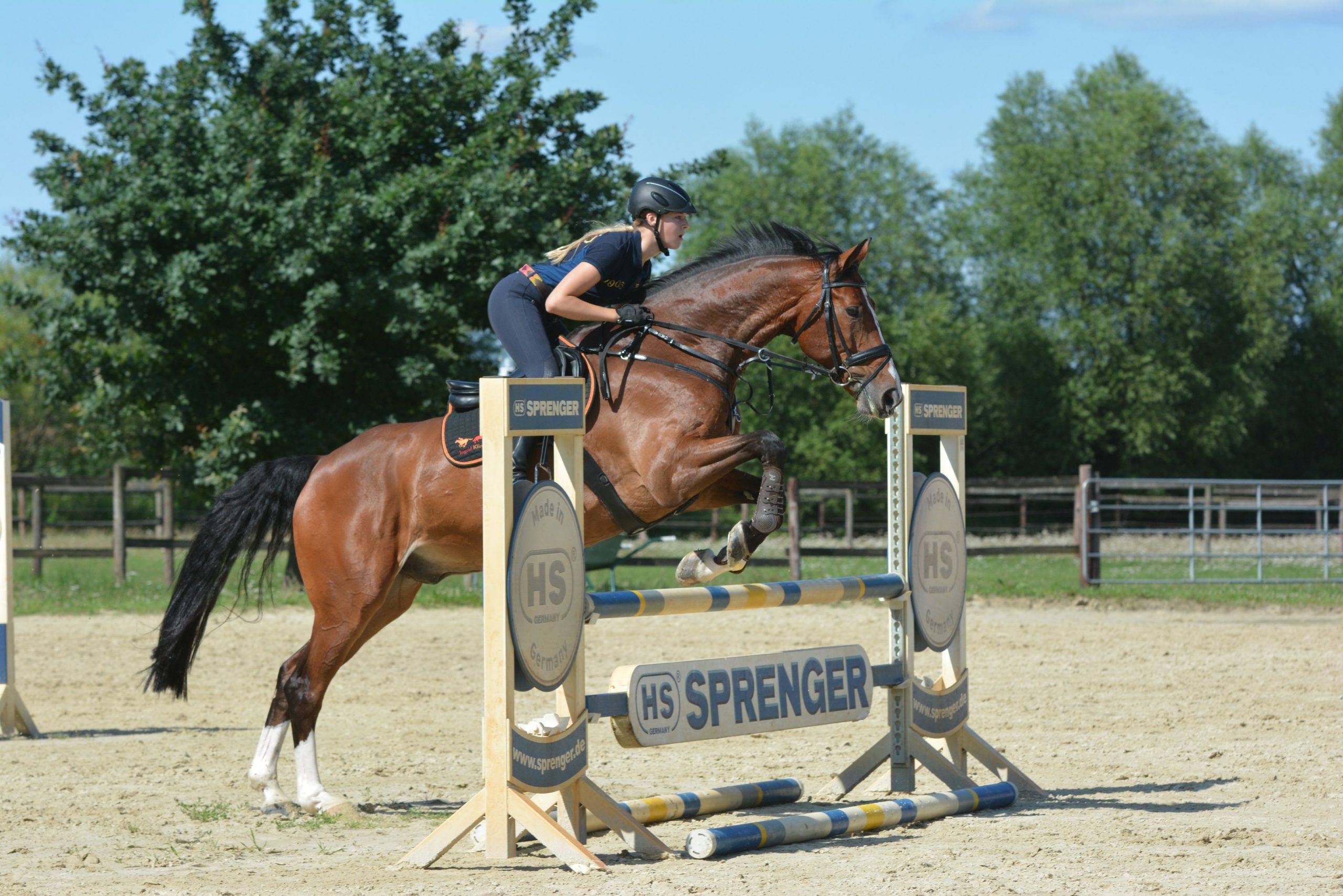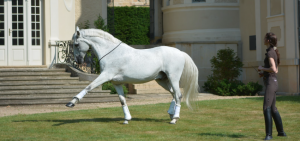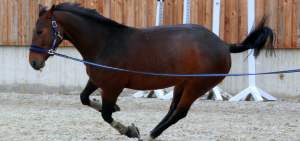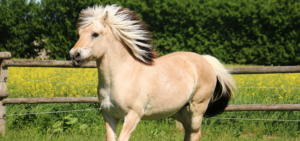Preparation is half the battle. This also applies to jumping exercises for horses – ‘just do it’ is not the right strategy here. It is much more fun, and much safer for horse and rider, if you prepare yourself step by step and grow with your tasks. This article provides four basic show jumping exercises for you to tackle before venturing onto your first big course with your horse. If you already have show jumping experience, these tips and exercises may help you to improve. Only by correcting the causes can you avoid knocking poles, refusals, or even falls.
Summary
Dressage fundamentals
‘No dressage, no showjumping’ is no longer an insider tip. Nevertheless, one sometimes sees showjumping riders and horses who can’t demonstrate the necessary dressage basics needed for successfully completing a show jumping course.
Here is a little checklist to get you started on improving your showjumping skills:
- Is your jumping position correct?
- Can you ride your horse with a constant, light contact?
- How is your extension posture?
- Do you know how to help your horse achieve inner and outer composure?
- Can you keep your horse in balance, even when riding on the second or third track?
Mastering the basics: Why is it so important?
First, to get through the course safely, successfully and in control. When riding a show jumping course, you have to have your horse 100% under control, be able to make quick, tight turns, keep him responsive to your seat and in front of the leg, be able to change speeds quickly and help him maintain balance. None of this works if your horse is not really responding on your aids, on the bit, arching his back and moving with composure and responsiveness.
Second, to protect your horse from injury. When it comes to jumping horses, exercise is everything. How can your horse respond to the challenges of a course when he is stiff and lacks suppleness? How will it compensate for the load put on its legs and back with every jump? How can it jump with composure and without pain?
Transitions as a key exercise
Riding transitions is always a good idea. This means transitions between gaits but also transitions within a gait. Flowing, controlled and correct transitions, especially within the canter, are also needed on the course, in some tests you’ll be asked to transition to a trot. These tempo changes should not happen by pulling on the reins, but by a fine transitioning from your seat with balance and without fighting or pulling.
Transitions in training and especially in the warm-up phase also serve as a means for getting your horse collected and responsive. Our showjumping trainer Eva Deimel shows you how you can design your warm-up phase to prepare your horse for the first jumps.
Walking the course
Why do you walk a jumping course before riding? Not because it looks professional, or because you just want to have a look at the obstacles. The latter too, of course, but it’s mainly to measure the distances and to estimate the speed as well as the number of strides between obstacles. With horse jumping exercises, you have to know what’s important.
The meter-step
Can you walk several steps in a row that are exactly one meter long? You should, to be able to walk a course properly. Practice this with a tape measure until you get the feeling for a correct stride length. This is the only way to correctly measure the distances between obstacles and prepare yourself for the course. You can also practice it with an experienced instructor and adjust your steps to hers.
The larger horse’s stride averages about 3.60 m. You need also to consider that your horse requires space for landing and jumping off. This in turn will vary according to the height of the jump.
Practicing distances – start with step one
Don’t get tense at the beginning and stress yourself by trying to know every distance immediately. There are show jumping riders who have been at it for years and still can’t see every distance properly. First concentrate on your rhythm. Find the right basic tempo at a canter. Your riding instructor can be of great help. Then start with a cavaletti pole or ground pole and try to canter over it without interrupting your rhythm. Your upper body should not noticeably move forward.
Timing is crucial: When your horse has really jumped off, move with him – many riders do this wrong and make their horse insecure!
According to Eva Deimel, it’s not so much the height of the jumps that matter but that you approach it properly.
Learn how to correctly feel and count the strides between obstacles. Ground poles and cavaletti are wonderful tools for practising these exercises at home, and they provide a safe way to learn to perceive distances when you’re riding.
From small to large: A jumping course made of cross rails and cavaletti
Are you able to maintain your rhythm over ground poles and cavaletti? Do you know how to measure a distance? Did you work on your dressage basics? Can you play with the distances and, for example, ride a distance in four strides and then in five?
If you feel well prepared to ride a jumping course, you should still progress from small to large. Starting with a course of cross rails and/or cavaletti has several advantages. One is that you can learn wonderfully from your mistakes, without risking injury or fatigue. You’ll be able to ride your horse several times over a course with cavaletti. With higher jumps this may not be the case.
It’s also easier to compensate for mistakes with small obstacles, and you won’t endanger yourself or your horse. And when you’ve safely mastered the small course, the jump to your first beginner course won’t seem so big anymore!
Gaining self-confidence for the big course
Self-confidence – both the horse’s and the rider’s – is something not to be underestimated in show jumping. The safe completion of a jumping course requires mutual trust, as well as trust in yourself. Try out these four preparatory jumping exercises for horses from Eva Deimel and you’ll find that they’ll make give you more confidence on the course. Of course it won’t happen overnight, but it’s worth keeping at it and soon you might even earn your first yellow ribbon!
You can find out more on our showjumping and cavaletti training dedicated playlist.







